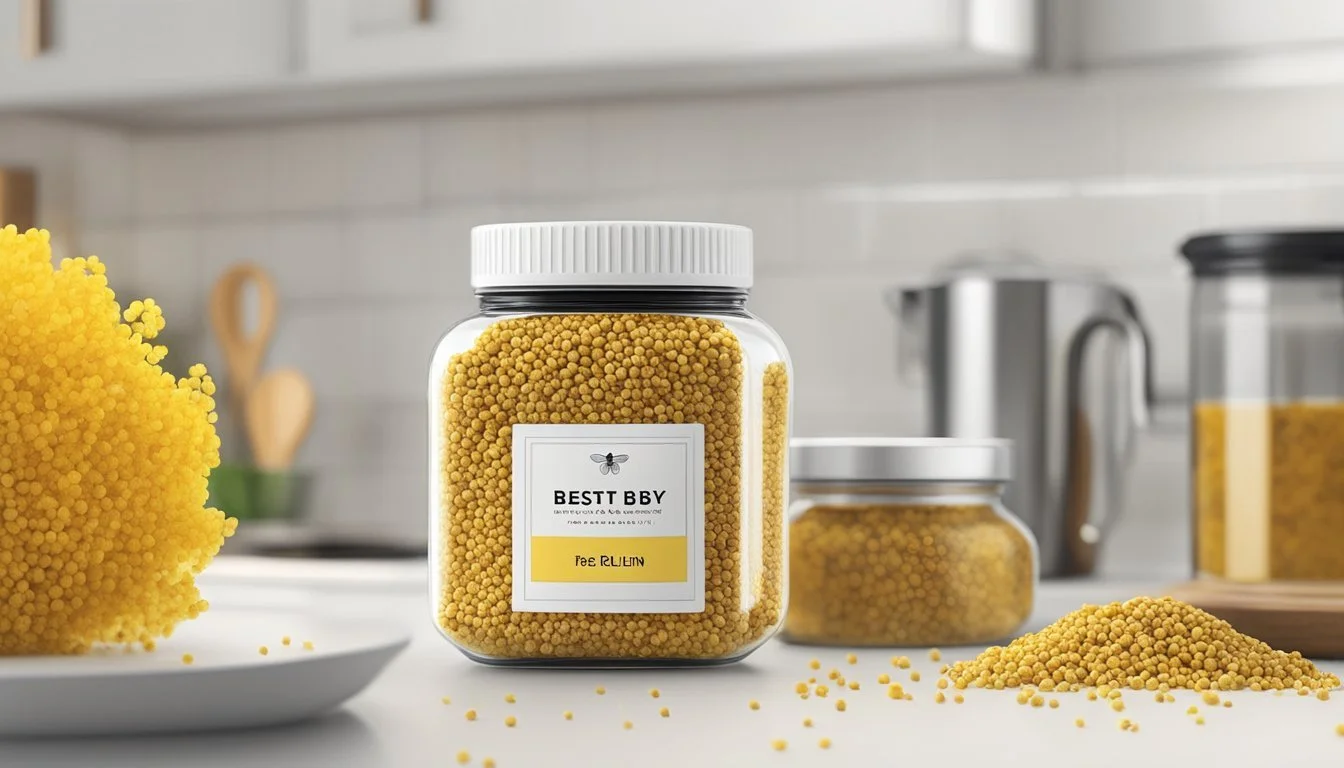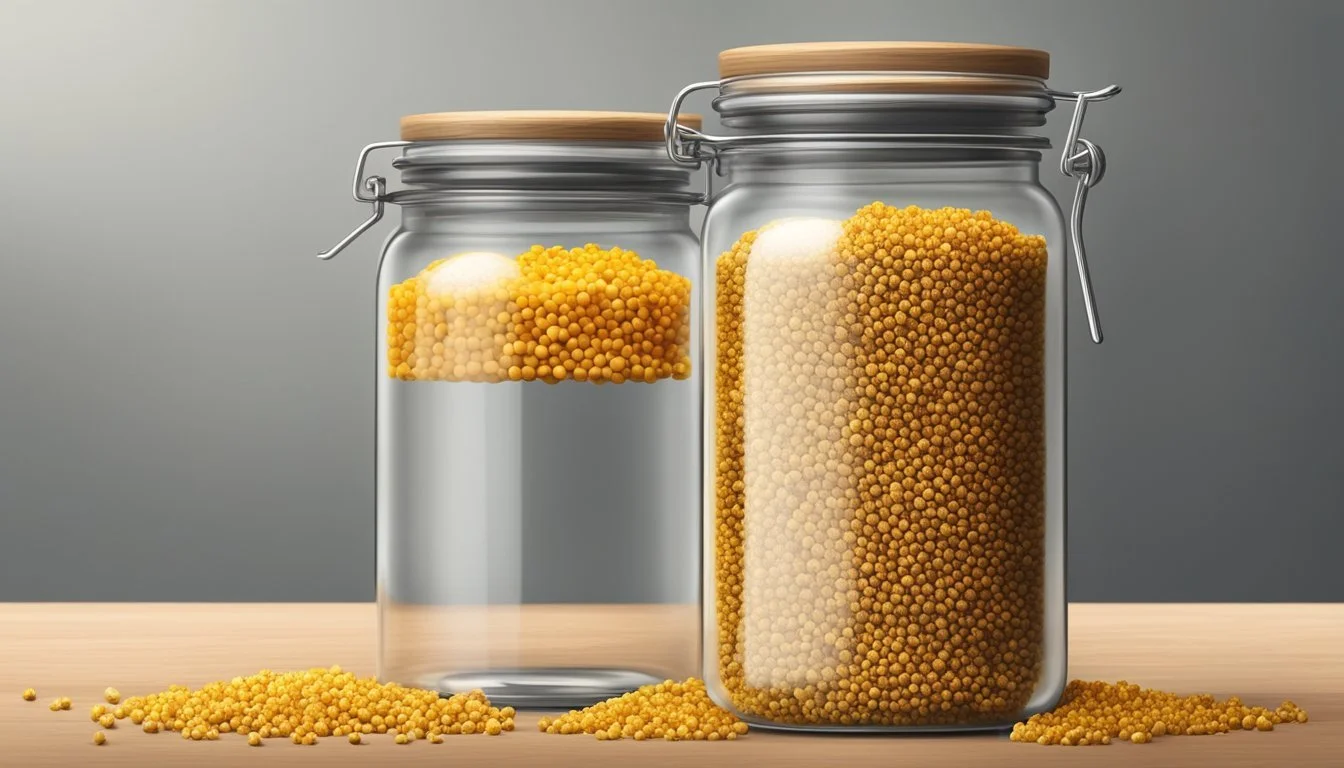Does Bee Pollen Go Bad?
Understanding Shelf Life and Storage Tips
Bee pollen is collected by bees as they gather nectar and is often referred to as nature's most complete food due to its comprehensive range of nutrients. It contains proteins, vitamins, minerals, lipids, and carbohydrates, which contributes to its popularity as a dietary supplement. Bee pollen is heralded for its potential health benefits, which include boosting immunity, alleviating allergies, and improving energy and stamina.
However, consumers often question the longevity and stability of bee pollen's nutritional profile. While bee pollen does not spoil in the traditional sense, like perishable food items, it can deteriorate in quality over time. It's crucial for users to store bee pollen properly to maintain its beneficial properties. When bee pollen is exposed to elements such as moisture, heat, and light, it may start to lose its potency.
Identifying the signs of degradation in bee pollen is key to ensuring its optimal health benefits. A change in odor, texture, or taste can indicate that the bee pollen is no longer at its peak quality. A rancid smell, a less vibrant color, or a difference in flavor are common indicators suggesting that the bee pollen should no longer be consumed. Proper storage methods such as refrigeration or freezing can significantly extend the shelf life and preserve the quality of bee pollen.
Understanding Bee Pollen
Bee pollen is a unique and complex substance known for its nutritious composition, offering a wide array of health benefits.
Composition and Nutritional Value
Bee pollen is a granulated material that bees collect from flowers. It is composed of flower pollen mixed with nectar, bee saliva, and plant enzymes, which results in small golden pellets. Nutritionally, bee pollen is incredibly dense and rich in:
Proteins: Approximately 40% protein, bee pollen provides essential amino acids that the body can't produce.
Vitamins: It contains vitamins A, B, C, D, and E, which contribute to overall health and well-being.
Minerals: Essential minerals such as potassium, calcium, magnesium, and zinc are found in bee pollen.
Lipids: Including beneficial omega-3 and omega-6 fatty acids.
Carbohydrates: Mainly simple sugars, but also fibers.
Antioxidants: Compounds that protect the body against free radicals.
Enzymes: Assist in digestion and biochemical processes.
The exact composition can vary depending on the types of flowers the bees have visited.
Health Benefits of Bee Pollen
Bee pollen is often consumed for its potential health benefits. The nutritional components of bee pollen can support the immune system, potentially helping the body fend off illnesses. Owing to its nutritional profile, bee pollen may contribute to improved vitality and energy levels.
Additionally, bee pollen has been associated with the following benefits:
It may help alleviate allergy symptoms by reducing the presence of histamines in the body.
The antioxidants in bee pollen might protect cellular structures and promote healthy skin.
Some people use bee pollen to supplement nutritional intake, as it is an all-in-one source of vital nutrients.
It's important to note that individuals with pollen-related allergies should approach bee pollen with caution, as it can trigger allergic reactions.
Proper Storage for Longevity
Optimal preservation of bee pollen hinges on temperature control, moisture regulation, and protection from light. Correct storage can significantly impact its shelf life and quality.
Ideal Storage Conditions
Bee pollen retains its quality best when stored in a dark, dry environment. Exposure to light and heat can degrade pollen, so it's advisable to keep it in a dark container to mitigate these effects. Moisture can also affect the integrity of bee pollen, necessitating storage in an area with low moisture content.
Refrigeration vs. Room Temperature
Keeping bee pollen at a consistent, cool temperature helps preserve its freshness. The ideal temperature range is between 32°F (0°C) and 40°F (4°C), achievable in a standard refrigerator. In contrast, at room temperature, bee pollen may last 6 months to a year, but this can vary based on specific conditions such as humidity and light exposure.
Extending Shelf Life
For an extended preservation time, freezing bee pollen is an effective method. When stored in airtight containers and placed in a freezer, its shelf life can be prolonged for up to three years. Regardless of the method, ensure the storage techniques involve airtight containers to avoid introducing moisture and other contaminants that could compromise the pollen's quality.
Identifying Fresh vs. Expired Bee Pollen
Fresh bee pollen differs significantly in sensory attributes and quality from expired bee pollen. The following subsections offer guidance on how to distinguish between the two based on visual and olfactory cues, as well as an understanding of bee pollen's shelf life in relation to its potency.
Signs of Fresh Bee Pollen
Texture: Fresh bee pollen granules should be soft and pliable when pressed between your fingers.
Color: It should display a bright, vibrant hue, indicative of its nutritional quality and freshness.
Smell: Expect a pleasantly sweet and floral aroma from fresh bee pollen, which signifies that it is full of flavor and potency.
Moisture: The moisture content should be balanced, not overly dry or excessively moist, to preserve its quality.
Indicators of Spoilage
Texture: If the granules feel overly hard or have become mushy, it's a possible sign of spoilage.
Color: A faded or an inconsistent color may indicate the pollen is past its best.
Smell: An off or rancid smell is a clear indicator of oxidation and spoilage.
Taste: Should the flavor become bitter or sour, the bee pollen might be compromised.
Mold: Visible mold growth or any sign of bacterial growth shows definitive spoilage.
Understanding Expiration and Potency
Expiration Date: While bee pollen doesn't become poisonous after its expiration date, its natural taste and potential health benefits may lessen over time.
Potency: The nutritional potency, often associated with the freshness of bee pollen, diminishes as the product ages.
Shelf Life: Properly stored bee pollen can last from several months up to 3 years, with optimal storage slowing down the degradation process and preserving the pollen's inherent qualities.
Utilizing Bee Pollen
Bee pollen has diverse applications in diets and can also serve as a concentrated dietary supplement. Different forms of consumption allow for varied benefits, and proper dosage is key to optimizing its value for health.
Incorporating Bee Pollen into Diet
One can introduce bee pollen into their daily diet by sprinkling it over foods like yogurt and cereal or blending it into smoothies. It adds a subtle sweetness and texture to meals. It's important to start with a small quantity to assess tolerance, gradually increasing to a typical serving of one to two tablespoons per day.
Adding to Smoothies: For a nutrient-packed beverage, users can blend a tablespoon of bee pollen into their favorite smoothie recipe. This not only enhances the flavor but also boosts the smoothie’s nutritional content.
Sprinkling on Breakfast Foods:
Yogurt: Sprinkle one tablespoon of bee pollen on top of yogurt to create a healthful and energizing breakfast option.
Cereal: Adding bee pollen to cold or hot cereal can enrich the meal with vitamins and minerals.
Additionally, bee pollen can be steeped in hot water to make tea, allowing for gentle absorption of its nutrients.
Bee Pollen as a Supplement
In capsule form, bee pollen can serve as a concentrated supplement, often recommended for its potential in bolstering immunity and energy levels. The capsules provide a convenient and mess-free option for those wishing to incorporate the benefits of bee pollen without altering the taste of their food.
Recommended Dosage: When taking bee pollen in capsule form, it's vital to adhere to the recommended dosage on the product label, as excessive consumption can lead to adverse effects.
Consumption for Allergies: Some individuals consume bee pollen to mitigate the symptoms of allergies. However, the efficacy and safety of this usage can vary, and one should consult a healthcare provider before using bee pollen for this purpose, especially those with pollen allergies or a history of anaphylaxis.
Special Considerations
When incorporating bee pollen as a supplement, it's essential to consider its potential for allergic reactions and the unique implications for vulnerable groups. These factors can significantly influence its suitability for different individuals.
Allergic Reactions and Precautions
Bee pollen is a natural substance known for its health benefits, but it can also cause side effects, especially for individuals with pollen allergies. Precautions should be taken as some people might experience allergic reactions, which can range from mild to severe. Symptoms of an allergic reaction to bee pollen can include itching, swelling, shortness of breath, and in extreme cases, anaphylaxis.
Sensitive individuals or those allergic to pollen should consult a healthcare professional before taking bee pollen. Testing for allergies can prevent adverse reactions. It's also crucial to source bee pollen from reputable sources to ensure quality and purity, reducing the risk of contamination that could exacerbate allergies.
Bee Pollen for Vulnerable Groups
Certain groups, such as those who are pregnant, breastfeeding, children, and individuals with diabetes, should exercise caution with bee pollen. Its effects on these populations are not well-documented, and they may be more susceptible to its potential side effects.
Pregnant and breastfeeding women should avoid using bee pollen, as its safety has not been established. Children should only have bee pollen introduced into their diet under the guidance of a healthcare professional, due to the risk of allergies and other side effects. Similarly, individuals with diabetes must be aware that bee pollen might affect blood sugar levels. Always consult with a healthcare professional before starting any new supplement regimen.
Bee Pollen Harvesting and Production
The process of harvesting bee pollen involves collecting pollen from bees as they return to the hive and ensuring its quality before it turns into bee bread.
From Pollen Trap to Bee Bread
Bee pollen is collected by beekeepers using a pollen trap, which is placed at the entrance of the beehive. As worker bees pass through the trap, some of the pollen pellets that they have gathered from flowers are dislodged. These pellets are stored and then harvested by the beekeepers. Inside the hive, bees add nectar and enzymes to the pollen, which initiates fermentation and turns it into bee bread. The bee bread serves as a protein source for the hive and is different from the raw pollen as it has been mixed with honey, beeswax, and propolis, a sealant made by bees.
Beekeeping and Quality Control
Quality control during the harvest of bee pollen is crucial. Beekeepers must prioritize the health of their bees by ensuring that pesticides or pollutants do not contaminate the pollen. A reputable source ensures that pollen is collected in a safe and sustainable manner, respecting the natural cycle of the bees and avoiding overharvesting. High-quality bee pollen also depends on the cleanliness of the pollen traps and storage containers, which should be regularly inspected and maintained. Proper handling and storage are key in preserving the pollen's nutritional and beneficial properties.







